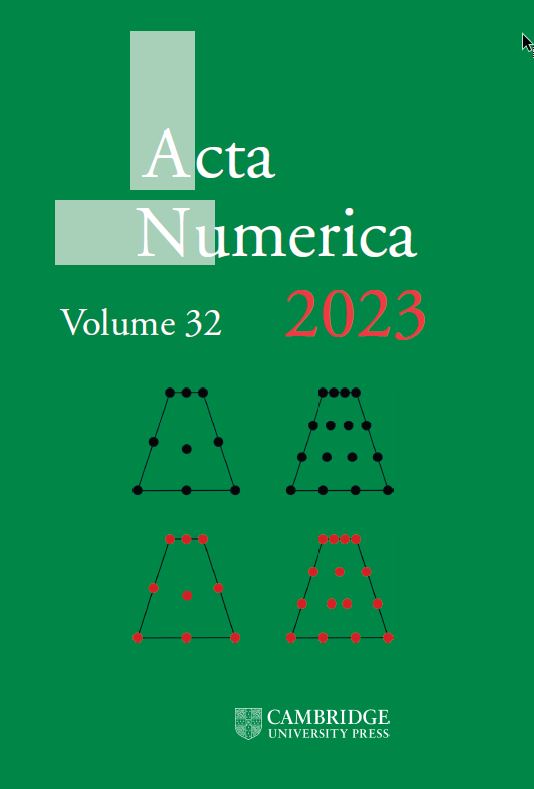Partial differential equations and stochastic methods in molecular dynamics*
IF 11.3
1区 数学
Q1 MATHEMATICS
引用次数: 173
Abstract
The objective of molecular dynamics computations is to infer macroscopic properties of matter from atomistic models via averages with respect to probability measures dictated by the principles of statistical physics. Obtaining accurate results requires efficient sampling of atomistic configurations, which are typically generated using very long trajectories of stochastic differential equations in high dimensions, such as Langevin dynamics and its overdamped limit. Depending on the quantities of interest at the macroscopic level, one may also be interested in dynamical properties computed from averages over paths of these dynamics. This review describes how techniques from the analysis of partial differential equations can be used to devise good algorithms and to quantify their efficiency and accuracy. In particular, a crucial role is played by the study of the long-time behaviour of the solution to the Fokker–Planck equation associated with the stochastic dynamics.分子动力学中的偏微分方程和随机方法*
分子动力学计算的目标是通过统计物理原理规定的概率测量的平均值,从原子模型推断物质的宏观性质。获得准确的结果需要对原子组态进行有效的采样,这通常是使用高维随机微分方程的很长轨迹产生的,例如朗之万动力学及其过阻尼极限。根据宏观水平上感兴趣的量,人们也可能对从这些动力学路径上的平均值计算的动力学性质感兴趣。这篇综述描述了如何利用偏微分方程分析的技术来设计好的算法,并量化它们的效率和准确性。特别是,与随机动力学相关的福克-普朗克方程解的长期行为研究起着至关重要的作用。
本文章由计算机程序翻译,如有差异,请以英文原文为准。
求助全文
约1分钟内获得全文
求助全文
来源期刊

Acta Numerica
MATHEMATICS-
CiteScore
26.00
自引率
0.70%
发文量
7
期刊介绍:
Acta Numerica stands as the preeminent mathematics journal, ranking highest in both Impact Factor and MCQ metrics. This annual journal features a collection of review articles that showcase survey papers authored by prominent researchers in numerical analysis, scientific computing, and computational mathematics. These papers deliver comprehensive overviews of recent advances, offering state-of-the-art techniques and analyses.
Encompassing the entirety of numerical analysis, the articles are crafted in an accessible style, catering to researchers at all levels and serving as valuable teaching aids for advanced instruction. The broad subject areas covered include computational methods in linear algebra, optimization, ordinary and partial differential equations, approximation theory, stochastic analysis, nonlinear dynamical systems, as well as the application of computational techniques in science and engineering. Acta Numerica also delves into the mathematical theory underpinning numerical methods, making it a versatile and authoritative resource in the field of mathematics.
 求助内容:
求助内容: 应助结果提醒方式:
应助结果提醒方式:


